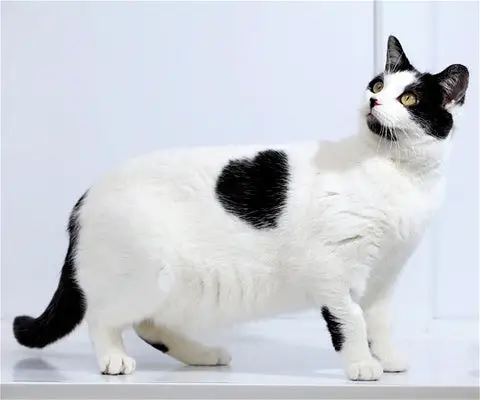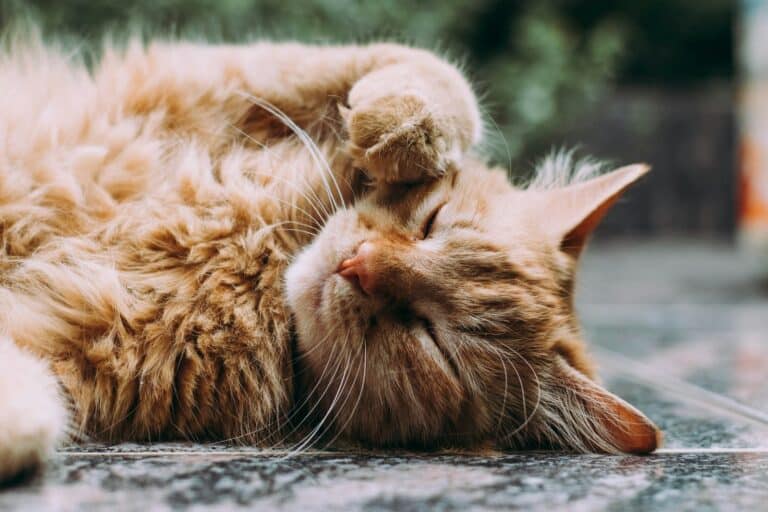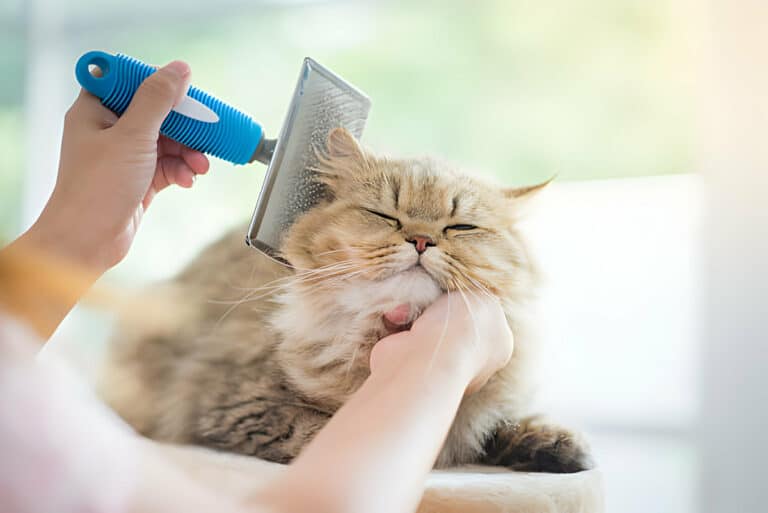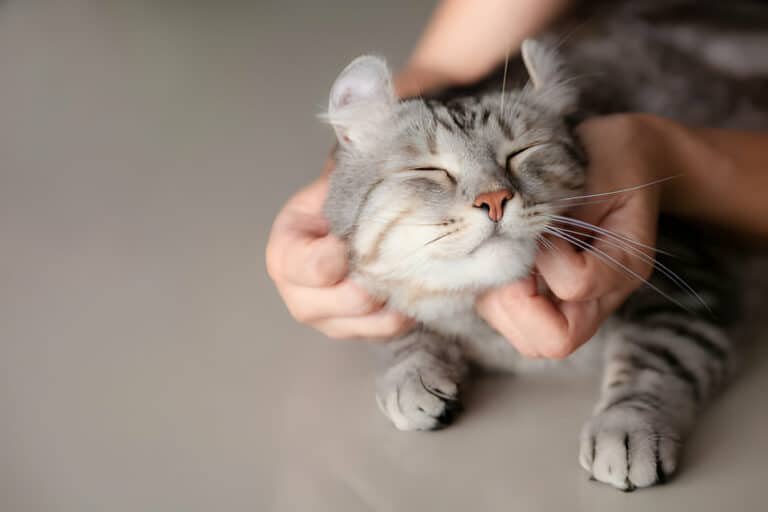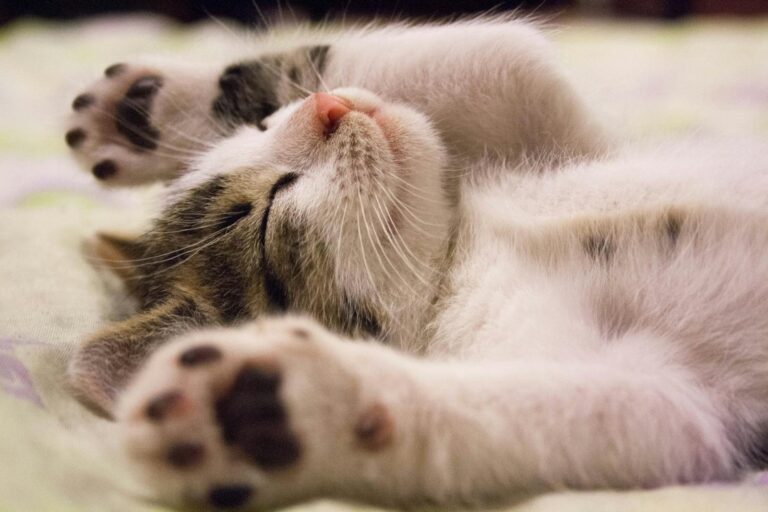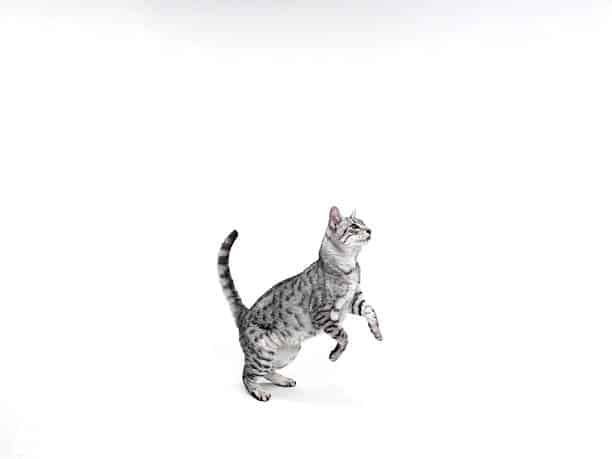Feline Cerebellar Hypoplasia: The Wobbly Cat Syndrome Impacts Kittens with a Unique Condition
Many cat owners may notice their adorable kittens displaying a wobbly gait or having difficulty with coordination, which could be a sign of Cerebellar Hypoplasia (CH), also known as “wobbly cat syndrome.”
While this neurological condition affects a cat’s balance and coordination, it is important to understand that CH is not contagious and does not impact a cat’s lifespan.
In this informative blog post, we will examine into the causes, symptoms, and management of CH, providing valuable insights for cat owners who have feline friends with this unique condition. With love and understanding, cats with CH can lead happy and fulfilling lives despite their challenges.
[ez-toc initial_view=”hide”]
What is cerebellar hypoplasia?
Definition and Background
For some kittens, being a little wobbly on their paws could be a sign of Cerebellar Hypoplasia (CH), also known as “wobbly cat syndrome” or “floppy cat syndrome”.
This neurological condition affects a cat’s balance and coordination but is not a life-threatening issue. With proper care, cats with CH can lead happy and fulfilling lives.
Anatomy and Physiology: The Feline Cerebellum
Hypoplasia in the cerebellum, the part of the brain responsible for balance and coordination, can lead to symptoms such as a wobbly gait and tremors in cats with CH. This underdevelopment of the cerebellum can impact a cat’s motor skills but does not affect their overall health or lifespan.
Genetics and Causes of Cerebellar Hypoplasia in Cats
Cats with Cerebellar Hypoplasia often inherit the condition genetically, as it can be passed down from parent cats to their kittens. However, maternal infections during pregnancy can also lead to CH, albeit less frequently. Understanding the genetic and environmental causes of CH can help in managing the condition effectively.
Epidemiology: Prevalence in Feline Populations
Cerebellar Hypoplasia is a relatively uncommon condition in the feline population, with symptoms usually noticeable within a few weeks after birth. Despite its rarity, it is crucial for pet owners and veterinarians to recognize and understand CH to provide the necessary support and care for affected cats.
Symptoms and Effects of Cerebellar Hypoplasia in Cats
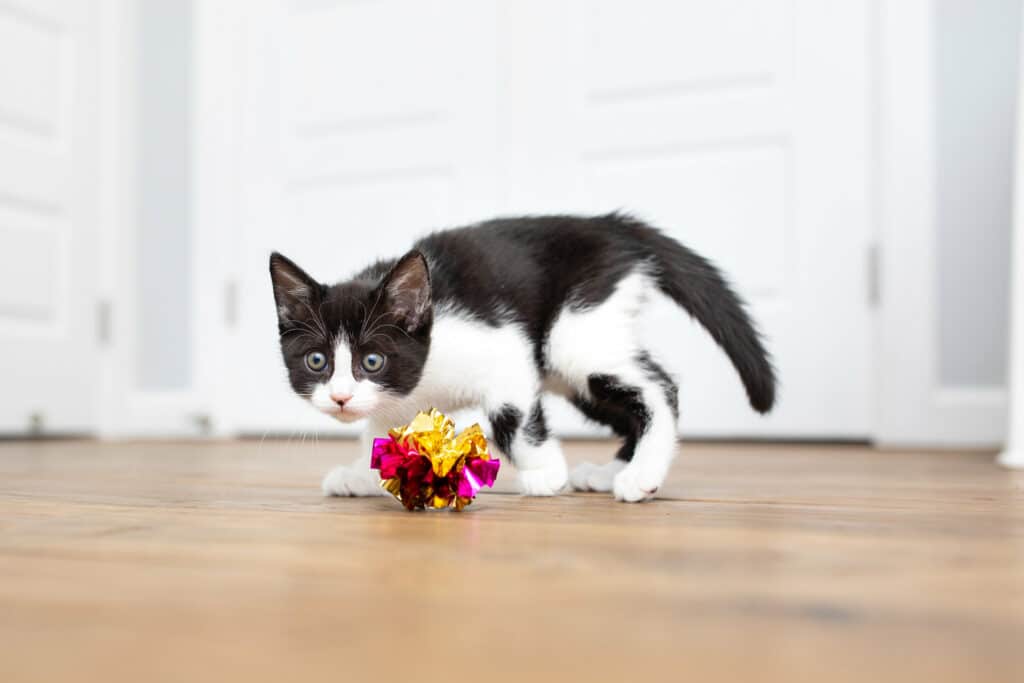
Clinical Signs and Physical Manifestations
Many kittens with Cerebellar Hypoplasia (CH) exhibit clinical signs such as a wobbly gait, head tremors, or tremors in general. These symptoms, typically appearing within a few weeks after birth, may vary in severity among affected cats. However, it’s important to note that CH does not affect a cat’s lifespan or overall health.
Neurological Assessment: Coordination and Reflexes
Any feline with CH will display challenges in coordination and reflexes during a neurological assessment. Clinical observation of their movements will reveal the impact of the condition on their balance and motor skills. These challenges are a result of the underdevelopment of the cerebellum, the part of the brain responsible for these functions.
To further understand the extent of their neurological impairment, veterinarians may conduct specific tests to assess the cat’s coordination and reflexes, helping to determine the severity of the condition and guide any necessary supportive measures.
Behavioral Aspects: Response to the Condition
Condition, cats with Cerebellar Hypoplasia may exhibit unique behavioral responses. While they may face challenges in mobility, affected cats can adapt and lead fulfilling lives with proper support and understanding from their caregivers. These cats often exhibit resilience and a strong will to overcome their limitations, making them resilient companions.
The Progression of Symptoms Over Time
Hypoplasia, Neurological signs associated with Cerebellar Hypoplasia may remain stable over time, with some cases showing improvement in coordination and motor skills as the cat learns to navigate their environment. Understanding the progression of symptoms is crucial for providing appropriate care and support for a feline with CH, ensuring they can thrive despite their unique condition.
Diagnosing Cerebellar Hypoplasia in Felines
Diagnostic Techniques and Assessments
Cerebellar Hypoplasia in felines can be diagnosed through a combination of clinical signs and evaluations. Veterinarians may conduct a thorough physical examination to assess the kitten’s coordination and balance, as well as observe any tremors or wobbly gait that are indicative of CH.
Differential Diagnosis: Ruling Out Other Conditions
Diagnostic tests may be necessary to rule out other potential causes of similar symptoms before confirming a diagnosis of Cerebellar Hypoplasia. These could include genetic testing, blood work, and ruling out infectious causes through specific tests. By eliminating other possibilities, veterinarians can accurately diagnose CH and provide appropriate care.
The Role of Imaging in Diagnosis
The use of imaging techniques such as MRI or CT scans can assist in confirming a diagnosis of Cerebellar Hypoplasia by visualizing the underdevelopment of the cerebellum in affected kittens. This imaging helps veterinarians understand the extent of the condition and further guide treatment plans to support the cat’s unique needs.
Veterinary Expertise and Diagnostic Criteria
An experienced veterinarian with knowledge of feline neurology is imperative in diagnosing Cerebellar Hypoplasia. They will consider the cat’s medical history, perform a comprehensive physical exam, and possibly conduct additional tests to confirm the presence of CH. By following specific diagnostic criteria, veterinarians can accurately diagnose and support cats with this neurological condition.
Management and Care for Cats with Cerebellar Hypoplasia
Immediate Care Following Diagnosis
One of the most important things to do after receiving a diagnosis of Cerebellar Hypoplasia (CH) in your cat is to ensure their immediate care. While CH may affect your feline friend’s balance and coordination, it doesn’t impact their lifespan or overall health. Provide a safe and comfortable environment with non-slip mats for their food and water bowls to help them navigate their surroundings with ease.
Nutritional Considerations for Optimal Health
Diagnosing a cat with CH can prompt consideration for specific nutritional needs. Cats with CH may benefit from a diet tailored to support their condition, such as one rich in Omega-3 fatty acids for brain health and immune support. Another necessary consideration is ensuring your cat maintains a healthy weight to alleviate any strain on their muscles and joints.
Exercise and Physical Therapy
Care for a cat with CH should include opportunities for exercise and physical therapy. For instance, gentle play sessions and activities that encourage movement can help improve your cat’s balance and coordination. Regular physical therapy exercises, such as stretching and controlled movements, can also aid in muscle strength and flexibility.
Environmental Adjustments and Accommodations
Cerebellar Hypoplasia can lead to unique challenges in navigating the environment. Following a diagnosis, consider making environmental adjustments and accommodations to ensure your cat’s safety and comfort. Provide elevated feeding stations, secure bedding, and clear pathways to their favorite spots to support their mobility and accessibility.
Feline Happiness and Quality of Life
Understanding Feline Welfare
Any pet owner’s top priority is ensuring the well-being of their beloved animal. When considering cats with Cerebellar Hypoplasia (CH), it’s crucial to provide a safe and comfortable environment that meets their unique needs. By making simple adjustments, such as using non-slip mats for their food and water bowls, we can help our wobbly feline friends navigate their surroundings with ease.
Emotional Well-being of Cats with Disabilities
To understand the emotional well-being of cats with disabilities, we must recognize that they can still lead fulfilling lives despite their challenges. Cats with CH may require a bit more patience and care, but with proper love and understanding, they can form strong bonds with their humans and other pets in the household.
Pets with disabilities, like those with Cerebellar Hypoplasia (CH), can thrive emotionally and form deep connections with their owners. Despite their physical limitations, these cats can bring immense joy and companionship to those around them.
Interaction with Humans and Other Pets
The social interactions of cats with CH can greatly impact their overall happiness and quality of life. By providing them with gentle and supportive care, we can help them build confidence and trust in their interactions with both humans and other pets.
Feline enrichment activities play a crucial role in keeping cats with CH mentally stimulated and physically active. Simple activities such as interactive toys, puzzle feeders, and scratching posts can help these special cats lead fulfilling lives.
For instance, creating vertical spaces for cats to explore and play can enhance their physical abilities and cognitive skills. By offering a variety of enrichment activities tailored to their unique needs, we can help cats with CH live their best lives.
Can Cats with Cerebellar Hypoplasia Live a Normal Life?
Defining ‘Normal’ for a Cat with Cerebellar Hypoplasia
On the surface, cats with Cerebellar Hypoplasia may appear different due to their wobbly gait and tremors. However, with the right care and environment, these cats can lead fulfilling lives that are just as happy as any other feline companion.
Long-term Prognosis and Lifespan Expectations
With Cerebellar Hypoplasia, cats can have a normal lifespan as the condition doesn’t affect their overall health. Though they may face coordination challenges, they can adapt well with supportive measures and lead a quality life filled with love and care.
With Cerebellar Hypoplasia, cats may have some challenges, but they can still enjoy a fulfilling life full of love and companionship.
Success Stories: Wobbly Cats Thriving in Various Environments
Cerebellar Hypoplasia doesn’t limit a cat’s ability to thrive. Many wobbly cats lead happy lives in various environments, showcasing their resilience and ability to adapt to their unique condition with the right support and care.
With the right environment and support, wobbly cats with Cerebellar Hypoplasia can thrive and bring joy to those around them.
Community Support and Testimonials
Environments where wobbly cats receive love, understanding, and proper care are imperative for their well-being. Community support and testimonials highlight the positive impact of providing a nurturing environment for cats with Cerebellar Hypoplasia, showcasing their strength and ability to overcome challenges.
Success in caring for wobbly cats with Cerebellar Hypoplasia is often a shared effort within a community that values these special feline companions.
Adapting Environments for Cats with Cerebellar Hypoplasia
Home Adjustments for Safety and Access
Despite the challenges presented by Cerebellar Hypoplasia (CH) in cats, simple adjustments in your home can make a huge difference in ensuring the safety and accessibility of your furry friend. Adapting your living space by using non-slip mats for food and water bowls or providing ramps for easier access to higher areas can help your wobbly cat navigate their environment with more confidence.
Selecting Appropriate Toys and Play Equipment
Adjustments in the selection of toys and play equipment are crucial for cats with Cerebellar Hypoplasia to engage in safe and enjoyable play experiences. For instance, opting for toys that are easy to grip and lightweight or choosing play equipment with lower heights can help prevent falls and injuries while still promoting exercise and mental stimulation.
Creating Low-Risk Outdoor Experiences
Adapting outdoor environments for cats with Cerebellar Hypoplasia is vital to provide them with safe and enriching experiences. Play areas with soft surfaces, enclosed spaces to prevent wandering, and supervised outdoor time can allow your wobbly cat to enjoy the outdoors while minimizing risks of accidents or getting lost.
Benefits of Specialized Products and Aids
Adapting specialized products and aids for cats with CH, such as harnesses or mobility devices, can greatly enhance their quality of life and independence. Another benefit of these products is that they can help reduce the risk of injuries and support your cat in their everyday activities, ensuring they can lead happy and fulfilling lives despite their condition.
Specialized Care for Cats with Wobbly Cat Syndrome
Working with Veterinary Professionals
Wobbly cat syndrome, also known as Cerebellar Hypoplasia (CH), requires specialized care to ensure the well-being of affected felines. Collaborating with veterinary professionals is important in managing this condition. Veterinarians can provide a diagnosis of CH and discuss potential treatment options to support your wobbly cat’s unique needs. Regular check-ups and monitoring by veterinarians can help track the progress of the condition and make any necessary adjustments to the care plan.
Role of Rehabilitation Specialists
To further enhance the quality of life for cats with wobbly cat syndrome, rehabilitation specialists play a crucial role. These professionals can develop customized rehabilitation programs to improve your cat’s coordination, strength, and overall mobility. Through targeted exercises and therapies, rehabilitation specialists help wobbly cats adapt to their condition and thrive in their daily activities.
Alternative Therapies and Complementary Medicine
Another valuable aspect of care for cats with wobbly cat syndrome is exploring alternative therapies and complementary medicine. These approaches, such as acupuncture or physical therapy, can complement traditional veterinary treatments. Alternative therapies aim to enhance your cat’s well-being and may provide additional support in managing the symptoms of CH.
Education and Support for Caregivers
To ensure the best possible care for your wobbly cat, education and support for caregivers are key. Understanding the unique needs of cats with CH, including environmental adjustments and specialized care routines, is important for their well-being. Support groups and online resources can also provide caregivers with valuable information and emotional support on their journey with a wobbly cat.
Feline Cerebellar Hypoplasia and Society
Raising Awareness and Reducing Stigma
Awareness of Feline Cerebellar Hypoplasia (CH) is crucial in reducing stigma and misconceptions surrounding this condition. While cats with CH may display wobbly movements, it is imperative to understand that they can lead fulfilling lives with proper care and support. By educating the public about CH, we can promote acceptance and compassion for these special feline companions.
Adoption and Responsible Breeding Practices
Feline Cerebellar Hypoplasia is often the result of genetics, highlighting the importance of responsible breeding practices in preventing the spread of this condition. Adopting cats with CH from reputable shelters and breeders who prioritize the health of their animals can help reduce the prevalence of CH in feline populations.
The adoption of cats with CH can be a rewarding experience for both the cat and their human companions. These resilient felines can form strong bonds with their owners and bring joy into their lives. By promoting responsible breeding practices and adoption, we can create a more inclusive and compassionate society for all cats, regardless of their unique needs.
The Importance of Research and Veterinary Advances
Breeding for certain traits or appearances can sometimes inadvertently lead to the development of genetic conditions like Feline Cerebellar Hypoplasia. By prioritizing research into the genetic causes of CH and supporting veterinary advances in treatment options, we can work towards better understanding and management of this condition. Continued efforts in research and veterinary care can improve the quality of life for cats with CH and pave the way for future advancements in feline healthcare.
Activism and Philanthropy: Support for Special Needs Cats
Research shows that cats with Cerebellar Hypoplasia can live happy and fulfilling lives with the right support. Activism and philanthropy aimed at raising funds for CH research, supporting shelters that care for special needs cats, and advocating for the humane treatment of all animals can make a significant impact. By coming together as a society to support these initiatives, we can create a more inclusive and compassionate world for all creatures, including those with unique conditions like Feline Cerebellar Hypoplasia.
Final Words
Summing up, Feline Cerebellar Hypoplasia, also known as “wobbly cat syndrome,” is a unique condition that affects kittens but does not impact their lifespan or overall health. Understanding the causes and symptoms of CH can help cat owners provide the necessary support and care for their feline friends. With patience, love, and some simple adjustments, cats with CH can lead happy and fulfilling lives. If you suspect that your kitten may have CH, a visit to the vet for a diagnosis and guidance on how to best support them is recommended. By embracing their uniqueness and providing them with a safe and understanding environment, wobbly cats can thrive and become beloved companions for years to come.
FAQ
Q: What is Feline Cerebellar Hypoplasia?
A: Feline Cerebellar Hypoplasia is a neurological disorder that affects cats, causing a lack of coordination and wobbling movements due to a smaller than normal cerebellum.
Q: How does a cat get infected with Feline Panleukopenia virus?
A: Cats can become infected with the Feline Panleukopenia virus by being exposed to the virus, especially kittens whose pregnant mothers were infected.
Q: Can a cat with Feline Cerebellar Hypoplasia live a normal life?
A: Cats with Feline Cerebellar Hypoplasia can still live full and happy lives, although they may require a little extra care and attention.
Q: Is Feline Cerebellar Hypoplasia contagious to other cats?
A: Feline Cerebellar Hypoplasia is not contagious to other cats as it is a condition that occurs during development and is not a result of a contagious disease.
Q: How can owners help their wobbly cats with Feline Cerebellar Hypoplasia?
A: Owners of cats with Feline Cerebellar Hypoplasia can help by providing a safe environment, ensuring their cat’s needs are met, and providing extra support when needed.
Q: What is the life expectancy of a cat with Feline Cerebellar Hypoplasia?
A: Cats with Feline Cerebellar Hypoplasia can have a normal life expectancy as long as they are properly cared for and their special needs are met.
Q: Can Feline Cerebellar Hypoplasia be prevented?
A: Feline Cerebellar Hypoplasia cannot be prevented as it is a condition that occurs during the development of the brain and is not caused by external factors.
Q: How can you protect a pregnant cat from infecting her kittens from Feline Panleukopenia virus?
A: Pregnant cats can protect their unborn kittens from Feline Panleukopenia virus by ensuring they are vaccinated against the virus and keeping them indoors to avoid exposure.
How long do cats with wobbly cat syndrome live?
Cats with wobbly cat syndrome can have a normal lifespan depending on the severity of the condition and any underlying health issues.
Can cats grow out of wobbly cat syndrome?
Some cats may improve with time and supportive care, but wobbly cat syndrome can be a lifelong condition for others.
What is the floppy kitten syndrome?
Floppy kitten syndrome, also known as cerebellar hypoplasia, is a neurological condition that causes poor coordination and balance in cats.
How can I help my cat pass peacefully at home?
Providing a comfortable and stress-free environment, ensuring pain management, and consulting with a veterinarian for palliative care options can help your cat pass peacefully at home.


